- Analytics
- Market Sentiment
CFTC report from July 8 covered information available on July 2
According to the CFTC report, market participants keep net long speculative positions against the US dollar on most of the major currencies. The largest net short positions observed on the Japanese yen and the Australian dollar, followed by the European currencies - the euro and the British pound. In this case, the recent changes in the positioning occurred exclusively in favor of the US dollar, but the greatest increase in net short positions was registered on the European currency.
As a whole thing, the current positioning is in line with our medium-term forecasts. We expect a large-scale strengthening on an American currency in the second half of the year. Particularly, short positions on the Japanese yen, the euro and the British pound seem to us especially interesting from a strategic point of view.
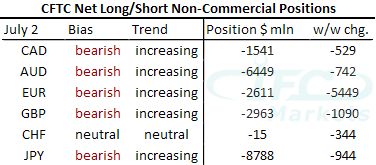
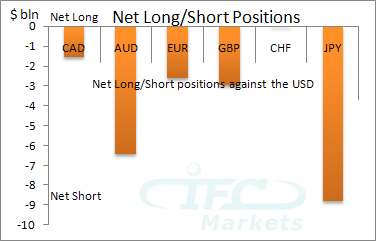
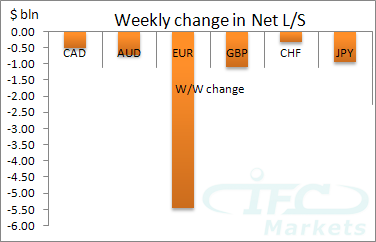
The net short position on the Canadian dollar rose by 0.5 billion USD, to -1.5 billion USD. The sentiment remains bearish.
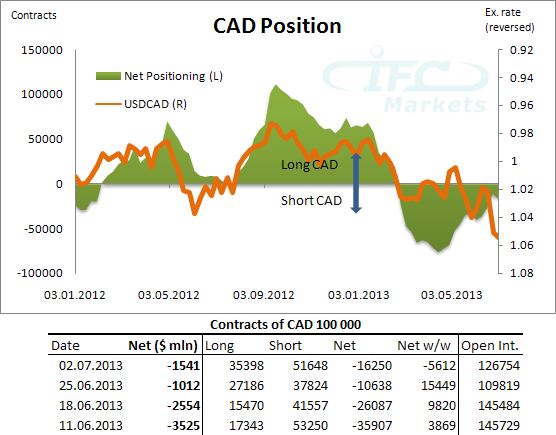
Australian dollar keeps its significant net short position vs. the U.S. dollar. Last week, its volume rose to -6.5 billion USD. The Australian dollar is the second-largest net short positioner, behind only the Japanese yen.
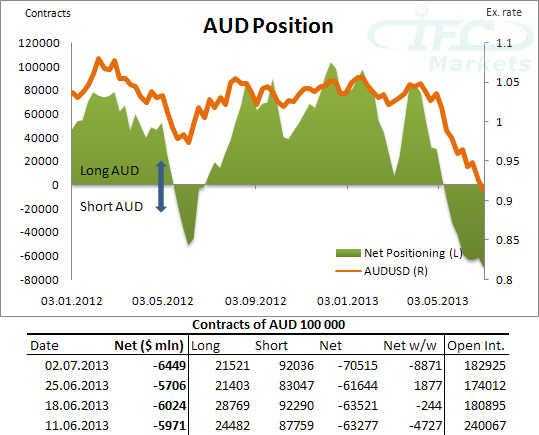
After a short break, market reoccupied the net short position on the Euro that was -5.5 billion USD last week. The bearish sentiment is dominating.
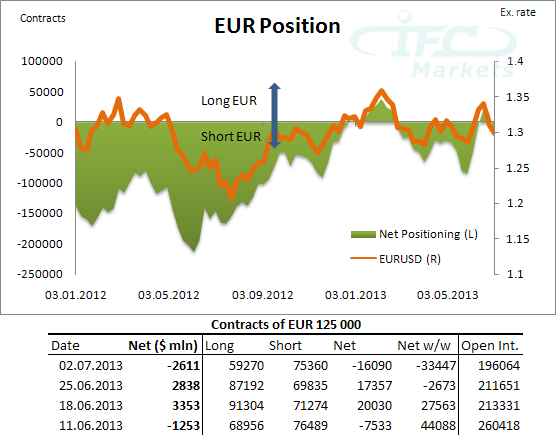
The net short position on the British pound rose to -2.9 billion USD. The sentiment is bearish.
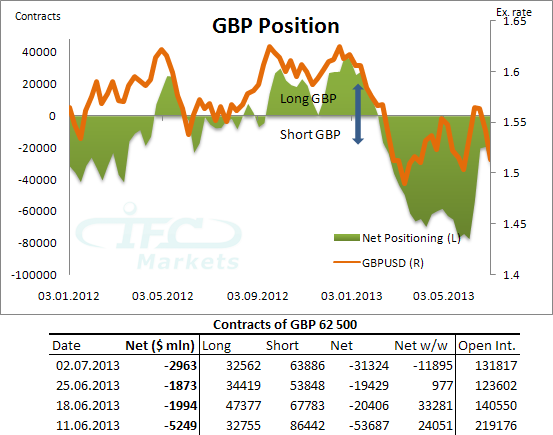
The net position of the Swiss franc remains close to complete balance. The sentiment is neutral.
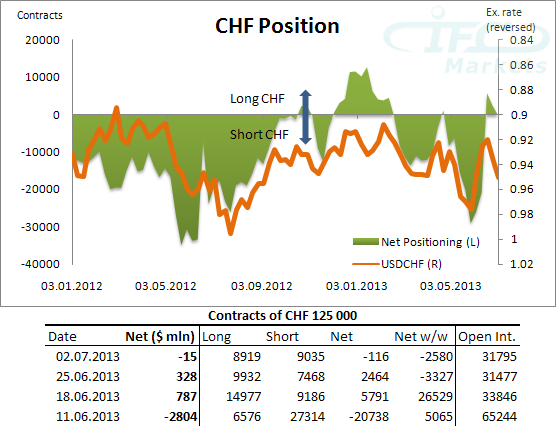
The yen holds the leadership by the largest net short position vs. the U.S. dollar. It rose to -8.8 billion USD last week. The sentiment remains bearish.
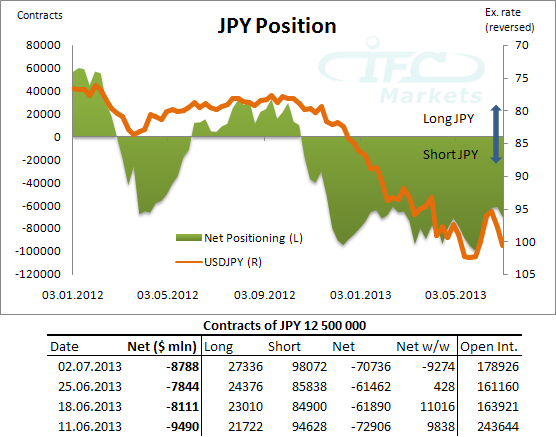
New Exclusive Analytical Tool
Any date range - from 1 day to 1 year
Any Trading Group - Forex, Stocks, Indices, etc.
Note:
This overview has an informative and tutorial character and is published for free. All the data, included in the overview, are received from public sources, recognized as more or less reliable. Moreover, there is no guarantee that the indicated information is full and precise. Overviews are not updated. The whole information in each overview, including opinion, indicators, charts and anything else, is provided only for familiarization purposes and is not financial advice or а recommendation. The whole text and its any part, as well as the charts cannot be considered as an offer to make a deal with any asset. IFC Markets and its employees under any circumstances are not liable for any action taken by someone else during or after reading the overview.
Last Sentiments
- 18Mar2021Weekly Top Gainers/Losers: Canadian dollar and Japanese yen
Over the past 7 days, prices for oil, non-ferrous metals and other mineral raw materials decreased but still remained high. As a result, the currencies of the commodity countries strengthened: the Canadian dollar, the Australian and New Zealand dollars, the Mexican peso, and the South African rand. The...
- 10Mar2021Weekly Top Gainers/Losers: Canadian dollar and New Zealand dollar
Оil quotes continued to rise over the past 7 days. Against this background, the currencies of oil-producing countries, such as the Russian ruble and the Canadian dollar, strengthened. The New Zealand dollar weakened after the announcement of negative economic indicators: ANZ Business Confidence and...
- 4Mar2021Weekly Top Gainers/Losers: American dollar and South African rand
Over the past 7 days, oil quotes continued to grow. Precious metals, including gold, fell in price. Against this background, the shares of oil companies increased, the Russian ruble strengthened, the Australian and New Zealand dollars, as well as the South African rand, weakened. The US dollar strengthened...






